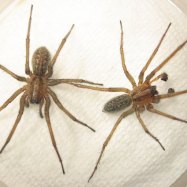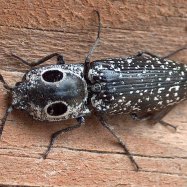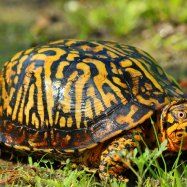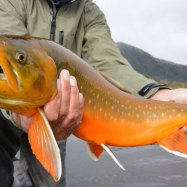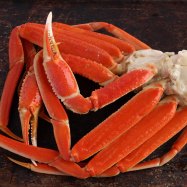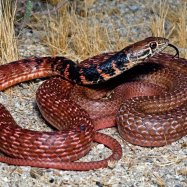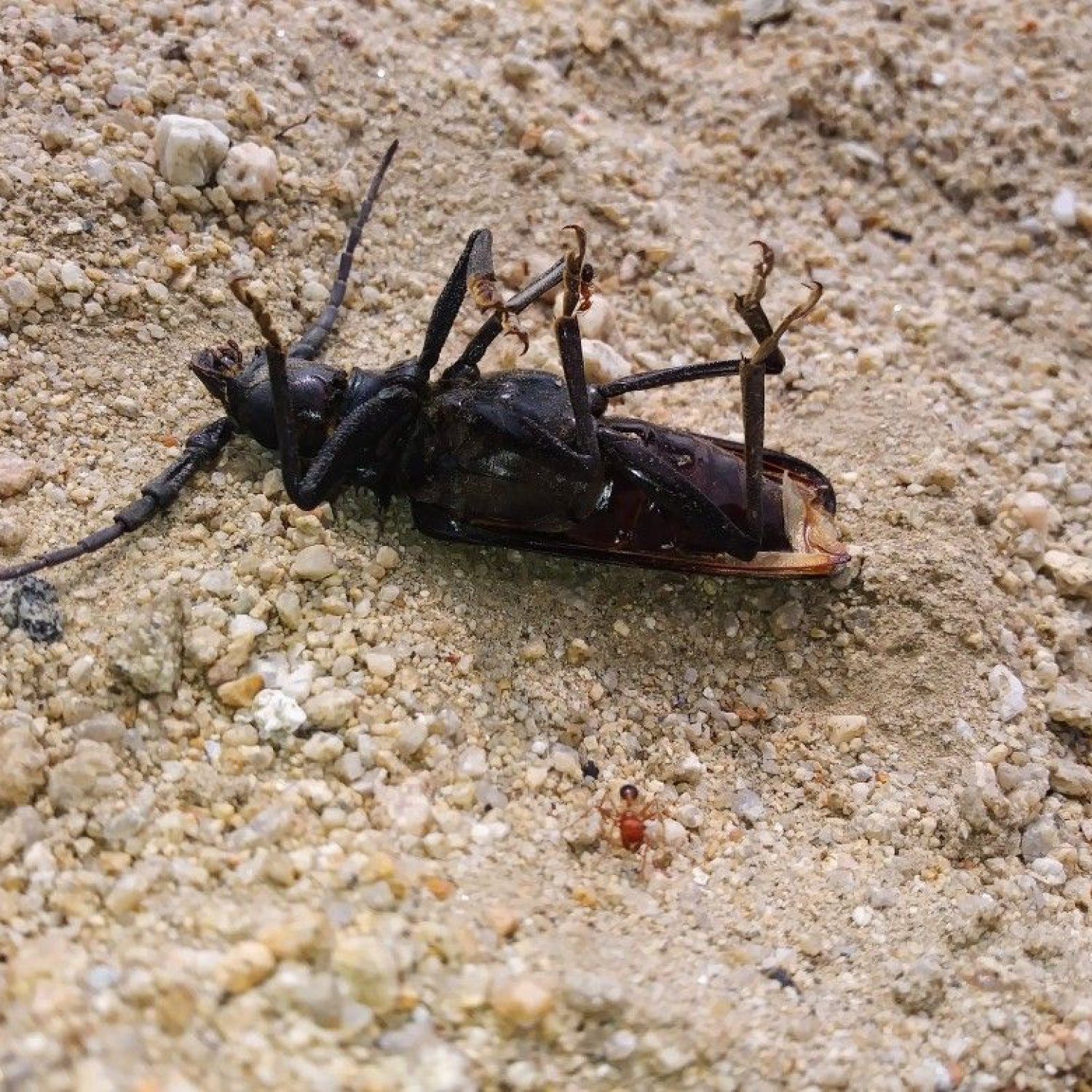
Palo Verde Beetle
Up to 3.5 inches
Spotlight on the fascinating Palo Verde Beetle: These impressive creatures can reach up to 3.5 inches in length and are found in the Sonoran and Mojave Deserts. Belonging to the Cerambycidae family, their long and cylindrical body shape allows them to burrow into soil for food, making them vital to desert ecosystems. #PaloVerdeBeetle #DesertWildlife #Cerambycidae
Animal Details Summary:
Common Name: Palo Verde Beetle
Kingdom: Animalia
Habitat: Desert regions with Palo Verde trees
The Mighty Palo Verde Beetle: A Fascinating Insect of the Desert
In the vast and scorching deserts of the Southwest United States and Mexico, a fascinating yet intimidating insect roams. Its dark brown to black body, up to 3.5 inches in length, strikes fear in the hearts of many. Ladies and gentlemen, allow me to introduce you to the mighty Palo Verde Beetle Palo Verde Beetle.With its scientific name Derobrachus geminatus, the Palo Verde Beetle belongs to the Animalia kingdom and Arthropoda phylum. These large insects are a part of the Coleoptera order, making them distant cousins of other beetles such as ladybugs and fireflies. They also belong to the Cerambycidae family, known as the longhorn beetles due to their long antennae.
Palo Verde Beetles are most commonly found in desert regions with Palo Verde trees, their primary food source. These giant creatures possess a unique feeding method – wood-boring. Unlike other beetles that feed on leaves or nectar, Palo Verde Beetles spend the majority of their adulthood chomping on bark, wood, and tree roots.
As you may have guessed by now, Palo Verde Beetles are not your typical garden bugs. They are often mistaken for cockroaches or even tarantulas due to their large size and dark coloration. However, despite their intimidating appearance, these creatures are not harmful to humans Pudelpointer.
Geographically, Palo Verde Beetles are found in the states of Arizona, California, New Mexico, and Texas in the United States, and in parts of Mexico. They thrive in the hot and dry climate of the Sonoran and Mojave Deserts. In these regions, you can spot them buzzing around trees or crawling on the ground during the summer months.
Now that we have a basic understanding of this fascinating insect, let's delve deeper into its unique characteristics, behavior, and role in the desert ecosystem.
Appearance and Habitat
The dark brown to black coloration of Palo Verde Beetles may seem dull, but upon a closer look, their bodies are covered in fine hairs, giving them a velvety texture. These hairs help protect them from the dry and harsh desert environment.Although they cannot fly, Palo Verde Beetles have two pairs of transparent wings that they use to glide short distances. These wings are rarely used, as these bulky insects prefer to walk or crawl.
Their long and cylindrical body is designed for digging and burrowing. Their strong legs and sharp claws help them move through the desert terrain and burrow into the ground to lay their eggs.
As mentioned earlier, Palo Verde Beetles prefer to inhabit areas with Palo Verde trees. These trees, which are primarily found in the desert regions of the Southwest, provide the perfect shelter and food source for the beetles.
Life Cycle and Behavior
The life cycle of a Palo Verde Beetle is divided into three stages – egg, larvae, and adult. The female beetles lay their eggs in the soil near the base of Palo Verde trees. After a few weeks, tiny larvae emerge from the eggs and immediately start feeding on the tree roots.Larvae of Palo Verde Beetles are creamy white in color and have a soft body. They spend the majority of their life underground, feeding and growing. As they mature, they shed their exoskeleton multiple times until they reach their full size of up to 3.5 inches in length.
Once they reach adulthood, Palo Verde Beetles emerge from the ground during the monsoon season, which typically occurs between July and September. Males and females will then mate, and the females will return to the soil to lay their eggs, starting the cycle once again.
During the breeding and mating season, you may observe male Palo Verde Beetles fighting over females. These battles can be quite intense, with the males using their strong mandibles to wrestle each other.
The Importance of Palo Verde Beetles in the Ecosystem
Many may believe that Palo Verde Beetles are just another creepy-crawly insect roaming the desert. However, these mighty creatures play a crucial role in the desert ecosystem.As wood-boring insects, Palo Verde Beetles contribute to the decomposition of dead wood, which helps recycle nutrients in the soil. Their larvae also provide an essential food source for desert animals such as lizards and birds.
Additionally, Palo Verde Trees rely on these beetles to pollinate their flowers. During the monsoon season, when the flowers bloom, the beetles emerge from the ground and visit the flowers to feed on their nectar. In the process, they aid in the pollination process, ensuring the continued growth of these trees.
Encounters with Palo Verde Beetles
If you live in or are visiting the desert regions of the Southwest, you may come across Palo Verde Beetles. These encounters can range from terrifying to amusing, depending on your perception of these creatures.During the day, you may witness Palo Verde Beetles crawling on the ground or flying clumsily in the air. They are mostly active during the cooler hours of the evening and early morning.
Palo Verde Beetles are also attracted to lights at night. Due to their short lifespan, they are often seen buzzing around outdoor lamps or porch lights. They may also end up wandering into homes, causing a bit of a scare for those who are not familiar with them.
If you do come across a Palo Verde Beetle, do not be alarmed. These insects are harmless and do not pose any threat to humans. In fact, they are an essential part of the desert ecosystem and should be respected and appreciated.
The Fascinating World of Palo Verde Beetles
From their intimidating appearance to their crucial role in the desert ecosystem, Palo Verde Beetles are truly fascinating creatures. They have adapted to thrive in the harsh conditions of the desert and play a vital role in maintaining the balance of this ecosystem.These insects may not be everyone's cup of tea, but they sure are a valuable part of our natural world. So the next time you see a Palo Verde Beetle, take a moment to appreciate its unique characteristics and the important role it plays in the desert.

Palo Verde Beetle
Animal Details Palo Verde Beetle - Scientific Name: Derobrachus geminatus
- Category: Animals P
- Scientific Name: Derobrachus geminatus
- Common Name: Palo Verde Beetle
- Kingdom: Animalia
- Phylum: Arthropoda
- Class: Insecta
- Order: Coleoptera
- Family: Cerambycidae
- Habitat: Desert regions with Palo Verde trees
- Feeding Method: Wood-boring
- Geographical Distribution: Southwest United States and Mexico
- Country of Origin: United States and Mexico
- Location: Sonoran Desert, Mojave Desert
- Animal Coloration: Dark brown to black
- Body Shape: Long and cylindrical
- Length: Up to 3.5 inches
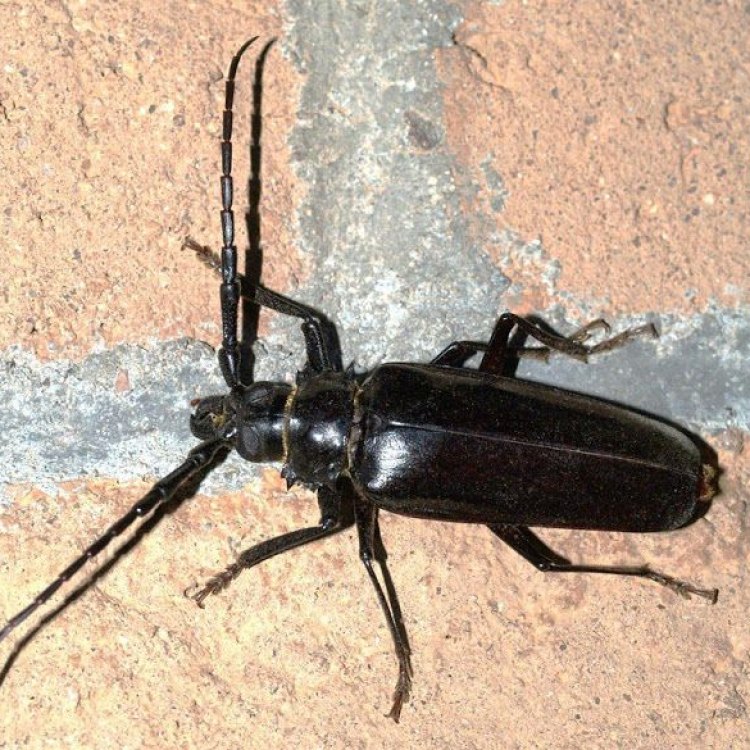
Palo Verde Beetle
- Adult Size: Large
- Average Lifespan: 1 to 3 years
- Reproduction: Sexual
- Reproductive Behavior: Mating occurs during the summer
- Sound or Call: None
- Migration Pattern: Non-migratory
- Social Groups: Solitary
- Behavior: Nocturnal
- Threats: Habitat loss, pesticides
- Conservation Status: Not listed
- Impact on Ecosystem: Prey for other predators
- Human Use: Not significant
- Distinctive Features: Long antennae, large size
- Interesting Facts: The Palo Verde Beetle spends most of its life underground as a larva, feeding on roots.
- Predator: Birds, reptiles, mammals
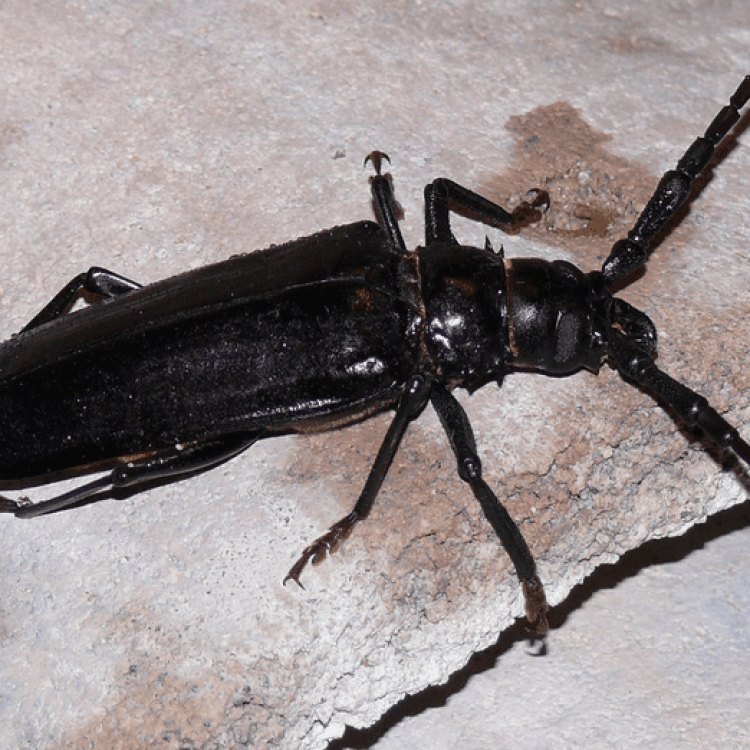
Derobrachus geminatus
The Fascinating World of the Palo Verde Beetle: A Creature Lurking Beneath the Surface
The Sonoran desert is a vast and seemingly barren landscape, but upon closer inspection, it is teeming with hidden wonders. One such wonder is the Palo Verde Beetle, the largest beetle in North America. This nocturnal creature is often overlooked due to its underground lifestyle, but it holds a wealth of unique features and behaviors that make it a fascinating species to study. From its size and lifespan to its reproduction and impact on the ecosystem, let's delve into the unusual world of the Palo Verde Beetle PeaceOfAnimals.Com.Size and Lifespan
As its name suggests, the Palo Verde Beetle is found in the Palo Verde tree region of the Sonoran desert. These massive insects can reach sizes of up to three and a half inches, making them the largest beetles found in North America. Their large size can be intimidating, but they pose no threat to humans as they do not have any stingers or venomous capabilities.
In terms of lifespan, the Palo Verde Beetle is a long-living insect, with an average lifespan of one to three years. This may seem like a short time compared to humans, but for most insects, this is considered a considerable amount of time. The larval stage of the beetle's life comprises the majority of this lifespan, as we will explore in the next section.
Reproduction and Mating Behavior
Unlike many other insects, the Palo Verde Beetle reproduces sexually. Adult beetles emerge from their underground burrows during the summer months in search of a mate. Mating is a complex and lengthy process for these insects and can last up to several hours Pig Nosed Turtle. The male beetle will use its long antennae to locate a female by picking up her pheromones. Once a suitable mate is located, the male beetle will present the female with a gift of plant material to entice her to mate.
Once the mating has occurred, the female will lay her eggs in the soil near the roots of the Palo Verde tree. She can lay up to 100 eggs, which will hatch into larvae after two weeks. The larvae will spend the majority of their lives underground, feeding on the roots of the tree until they reach maturity. This adaptation allows the Palo Verde Beetle to thrive in the desert, where resources can be scarce.
Migratory and Social Behavior
The Palo Verde Beetle is a solitary creature, and it does not migrate. Once the eggs are laid, the female beetle will die, and the male beetle will return to its underground burrow. The larvae will also spend their entire lives underground, only emerging when they reach maturity. This solitary behavior is an essential adaptation to survival in the harsh desert environment.
The adult beetles are also nocturnal, spending the majority of their time underground during the day, and emerging at night to feed and mate. This behavior helps them avoid the intense heat and predators that lurk during the day.
Threats to the Palo Verde Beetle
Like many other species, the Palo Verde Beetle faces threats to its survival in its native habitat. One of the main threats is habitat loss due to industrial development in the desert region. This loss of the Palo Verde tree, which serves as the beetle's primary food source, can have a significant impact on the beetle's population.
Pesticides are also a considerable threat to the Palo Verde Beetle and other insect populations. Although these insects are not considered pests and do not cause harm to humans, they can often fall prey to pesticides used to control other insect populations. The use of environmentally friendly pesticides is essential in preserving the Palo Verde Beetle and ensuring its continued existence.
Impact on Ecosystem
Despite its large size, the Palo Verde Beetle may seem like a minor player in the desert ecosystem. However, these insects play an important role in maintaining the balance of the ecosystem. As larvae, they feed on the roots of the Palo Verde tree, keeping them healthy and preventing diseases from spreading.
The adult beetles are also prey for other predators, including birds, reptiles, and small mammals, which rely on them for sustenance. The Palo Verde Beetle's presence also contributes to nutrient cycling as their excrement serves as a natural fertilizer for the soil.
Human Use and Interesting Facts
The Palo Verde Beetle holds no significant importance in human use, and it is not considered an agricultural pest or a valuable source of food or medicine. However, these insects have been a part of the traditional diet of some Native American communities, who often roast them as a delicacy.
One of the most interesting facts about the Palo Verde Beetle is its life cycle. As larvae, they spend the majority of their lives underground, but once they reach maturity, they only live for a few weeks. This short lifespan has led to a common misconception that the adult beetles are a different species from the larvae.
Predator-Prey Dynamics
As mentioned earlier, the Palo Verde Beetle has its share of predators, including birds, reptiles, and mammals. These predators are attracted to the beetles' large size and slow-moving nature, making them an easy source of food. However, the beetle has also developed a unique adaptation to escape predators, known as stridulation.
Stridulation is a defensive behavior where the beetle rubs its wings against its body, producing a squeaking noise. This noise, along with their large size, can startle and intimidate predators, giving the beetle a chance to escape. This adaptation is also seen in other insects, such as grasshoppers and cicadas.
In Conclusion
The Palo Verde Beetle may not be a well-known or glamorous creature, but it has a wealth of unique features and behaviors that make it a fascinating species to study. Its large size, long lifespan, and underground lifestyle make it a true survivor in the harsh desert environment. As we continue to learn more about this creature and the impact it has on its ecosystem, it becomes clear that every living being, no matter how small or seemingly insignificant, plays an essential role in the delicate balance of our planet.
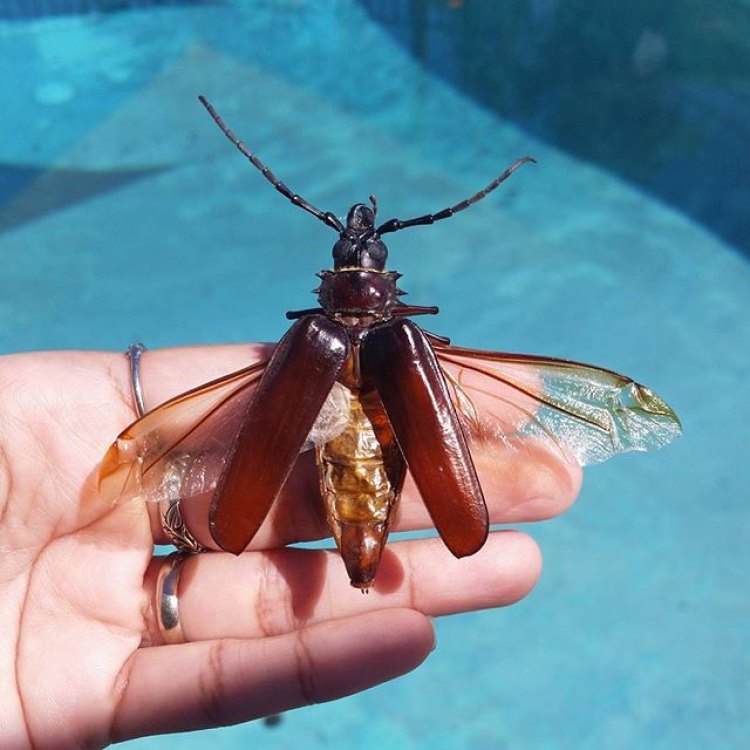
The Mighty Palo Verde Beetle: A Fascinating Insect of the Desert
Disclaimer: The content provided is for informational purposes only. We cannot guarantee the accuracy of the information on this page 100%. All information provided here may change without prior notice.




